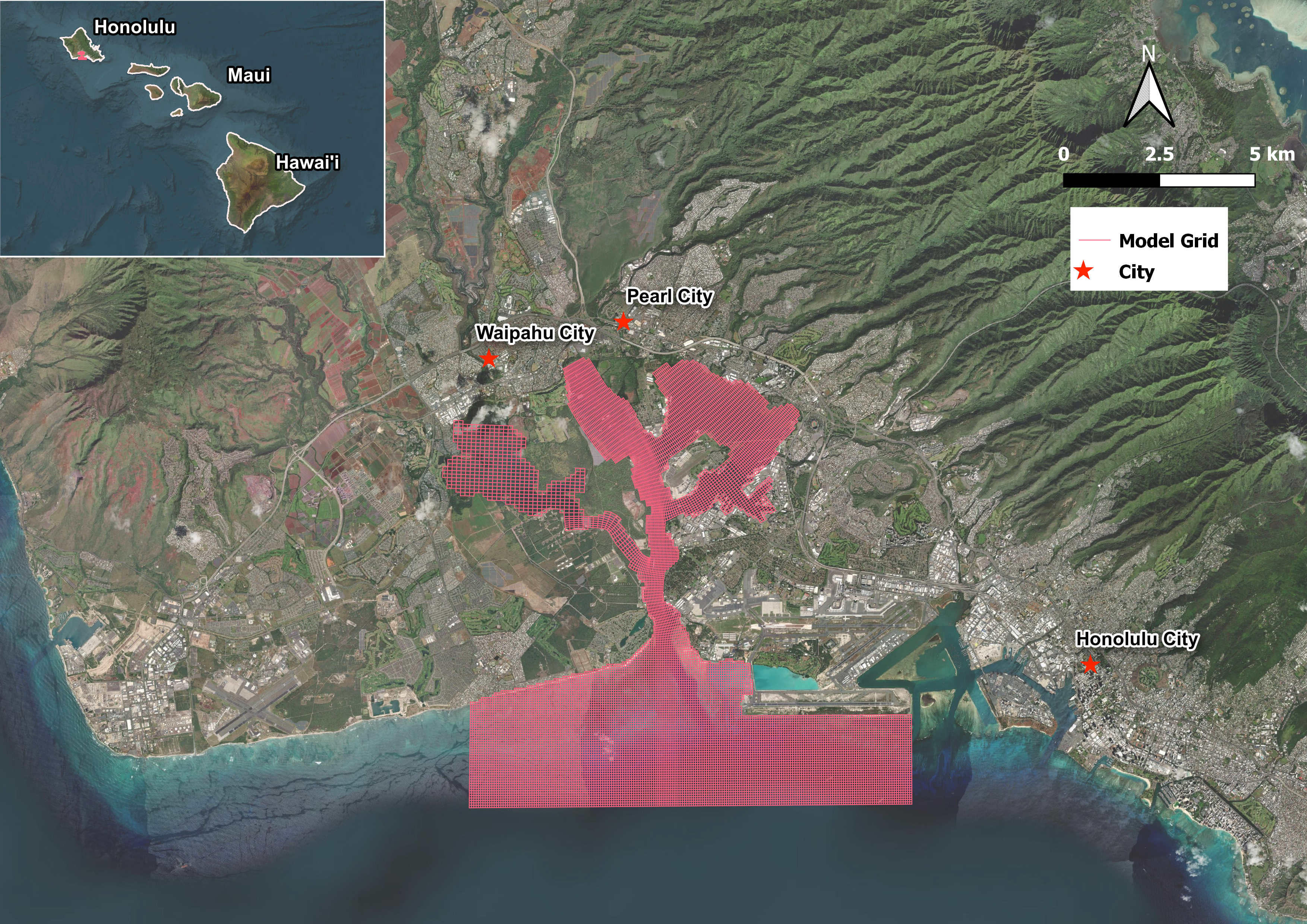
Sea Engineering International
From 2012 – To 2012
Model and report submitted in 2012
Pearl Harbor is an American lagoon harbor on the island of Oahu, Hawaii, west of Honolulu. DSI was contracted by Sea Engineering International (SEI) to develop an EFDC model to simulate the basic hydrodynamics of the harbor and the adjacent nearshore circulation. In general, the harbor circulation is a combination of wind- driven flow and tidal forcing. The offshore currents are essentially tidally driven and reciprocate in the shore-parallel direction. A specific regime where the surface layer within the harbor is driven out by northeast trade winds, with a bottom layer return flow, has been observed.
SEI required calibration with conditions of both strong trade winds and calm winds. Special attention was given to the flow in and out of Pearl Harbor and the east-west flow along the coast. The model was calibrated to measured currents from ADCPs located at three points of interest. The goal of the model calibration for current velocities was a correlation r2 value greater than or equal to 0.8 for each modeled period. DSI processed the ADCP data and then developed the calibrated EFDC model as required. The model was run with a vertical resolution fine enough to resolve the layered flow dynamics in Pearl Harbor.

The model is being used to predict dredge plumes for an upcoming environmental assessment and help quantify the degree to which a dredge plume would reach the coral reefs located to the east and west of Pearl Harbor’s entrance channel. To suc- cessfully accomplish this, the currents were required to be accurately approximated in the harbor and the nearby coast, in a seamless unified model.
DSI submitted the final model and report to the client in 2012.